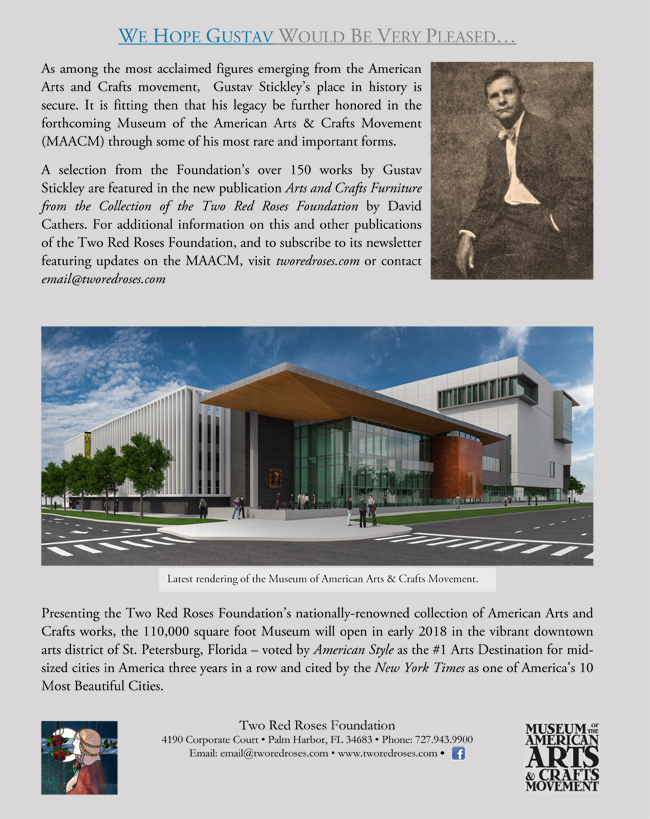Newsletter
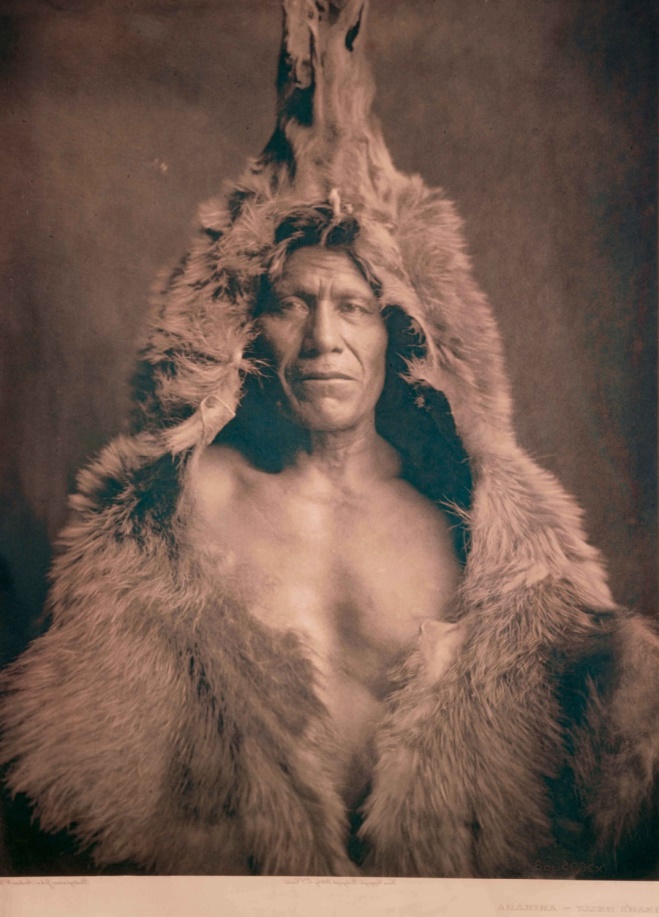
Photogravure plate - Bear's Belly - Arikara
Plate 150 from the North American Indian
Portfolio V, 1909. Image: 16" x 11 7/8"
In October of 2013 the Two Red Roses Foundation purchased an extremely rare original photogravure etching copper plate for one of Edward Curtis most famous Native American portraits, Bear’s Belly – Arikara.
The Foundation has been very interested in the photographic process of photogravure and is delighted to be able to share with future museum visitors an actual example of a copper plate used to produce beautiful photogravure prints. Since this acquisition, TRRF has been searching for an excellent copy of a photogravure of Bear’s Belly produced from this copper plate to add to its collection and to display next to its etching copper plate. All extant large-format photogravures of this image have been actually printed from this plate. After a long search The Foundation has been able to secure the most beautiful original vintage photogravure produced by this plate. While Curtis produced many of his images in platinum and orotone, this one is known to exist exclusively in photogravure. Additionally, this print (Plate 150 in Portfolio V of The North American Indian may be the only "Bear’s Belly" gravure printed on hand made Japanese Gampi (“tissue”). Tissue is the rarest and most expensive of the three original etching stocks used by Curtis and it is noted for its subtlety, fine resolution, luminosity, and strength. The other two types of paper used in the 25-year printing period of The North American Indian are Dutch Van Gelder (a watermarked paper), and Japon Vellum (a parchment-like rice paper variety). Only thirty to forty sets were produced as Tissue and a 30% premium was added to the cost of subscription. Records show that only J.P. Morgan, Teddy Roosevelt, Edward Curtis, the King of England, and a few others subscribed for the premium tissue edition.
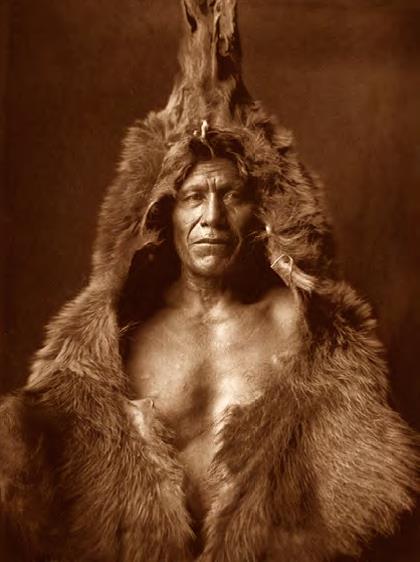
Bear's Belly - Arikara, 1909
Large format photogravure on Japanese
Gampi tissue. Print size: 22" x 18"
Image size: 15 ½" x 10 ½"
This photogravure comes from the Christopher Cardozo personal collection. It has been exhibited in the highly lauded exhibition "Sacred Legacy: Edward S. Curtis and The North American Indian" in 2004 in Palazzo Magnani, Reggio Emilia, Italy.
Now one of Curtis’s most recognized images, this photogravure shows a Native American brave from the Arikara tribe of North Dakota. The name, sometimes Arikaree or Ree, translates as "horns," referring to the tribe’s ancient custom of wearing upright horns in their hair. Bear’s Belly was born in 1847 in the trading village of Fort Clark. At the age of nineteen he joined the United States Army and served in Custer’s scouts at Fort Abraham Lincoln. He later became a member of the medicine fraternity, the Bears, and one fall needed a bearskin for his practice. He ventured into the White Clay Hills and came across not one but three bears, which he crept up upon. With one bullet he killed one and wounded another, which he finished off with a second shot. Bear’s Belly himself recounted that "A noise caused me to remember the third bear, which I saw rushing upon me six or seven paces away. I was yelling to keep up my courage and the bear was growling in anger. He rose on his hind legs and I shot, with my gun nearly touching his chest." Bear’s Belly was rewarded with three bearskins and sold the two he didn’t need. For the actual biographical sketch where Bear’s Belly recounts the encounter with the three bears click here.
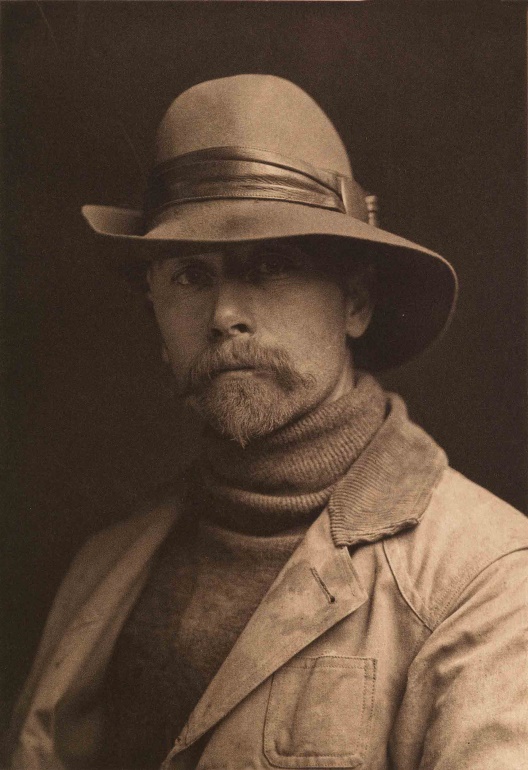
Curtis, Edward S., Self-portrait,
Large format photogravure on
Van Gelder Japanese vellum.Neg 1905, printed ca. 1925.
Image: 10" x 7"
Curtis here pictures the subject ensconced in the skin, with only his face and upper chest exposed. The bear’s snout or ears form the dramatic crest of the skin, sitting atop the Indian’s head. The skin’s effusive fur evokes the energy of the beast and suggests swirling water and other aspects of the natural world. Curtis approached his subject frontally, making a formal, symmetrical image of Bear’s Belly.
Edward Sheriff Curtis produced the most extensive documentation of Native American culture of the twentieth century. Published in twenty volumes (as bound books with accompanying oversize portfolios of loose prints), The North American Indian, included more than two thousand photographic images and detailed texts on the lifestyles of over eighty tribes. Curtis’s work is both naturalistic and pictorial; his subject matter clearly makes him a naturalist and his self-conscious artistic intentions (most visibly in his soft-focus effects) also classifies him as a pictorialist.
Curtis grew up in rural Wisconsin, after being born near Whitewater, on February 16, 1868. At age twelve, he built his own camera, and five years later moved with his family to St. Paul, Minnesota, where he apprenticed with a photographer. In 1887 he relocated to Puget Sound, Washington, with his father, who died a year later. In the early 1890s, after his mother and siblings joined him, Curtis helped support the family by becoming a partner in a small Seattle photographic studio. By the end of the decade, he was the city’s leading portrait photographer.
Around the turn of the twentieth century, Curtis exhibited in both professional and pictorial exhibitions. His work was seen in the shows at the annual conventions of the Photographers’ Association of America, the national organization of professionals, held in such locales as Milwaukee and Niagara Falls. In March 1907, he presented a solo show of his work at the California Camera Club in San Francisco, and the next year he participated in the members’ exhibition of the Camera Club of New York.
In contrast to Curtis’s high-society studio clientele, the country’s neglected indigenous population of Native Americans began drawing his interest in the late 1890s. In 1900, after going on the Harrison Alaskan Expedition to the Arctic Circle the previous year, he went on excursions to Montana, where he witnessed such sacred rituals as the Sun Dance, and to Arizona, where he photographed three separate tribes. Curtis was soon convinced that the American Indian deserved a mammoth documentary project far beyond his own resources. In 1906 he was fortunate to obtain substantial funding from J. Pierpont Morgan, and the very next year published the first two volumes of The North American Indian. The books feature quality paper, elegant letterpress-printed text, rich photogravures illustrations, and leather bindings. Nonetheless, it took another twenty-three years and untold personal sacrifices for Curtis to finish the set. Due to the time he increasingly spent on the project, he eventually lost his Seattle studio and his wife. And, despite Morgan’s generosity, Curtis had to do additional fund raising, frequently lecturing and presenting slide shows.
In 1914, he released "Land of the Headhunters," a film that was ethnographically valuable but financially a loss for him. In 1919 one of his daughters, Beth, opened a photographic studio in Los Angeles, which became his new base of operations for publishing the remainder of The North American Indian. Its last volume appeared in 1930, but only about three hundred of the projected five hundred sets were ultimately issued. After a short flurry of interest over the project’s completion, little attention was paid to it for the rest of the photographer’s life. Edward S. Curtis died of a heart attack at his daughter’s house in Whittier, California, on October 19, 1952, poor and unrecognized. Today complete sets of these volumes can fetch very high prices. On April 10, during a rare evening auction at Christies in New York, an exceptional complete subscriber’s set of Edward Curtis’ monumental work The North American Indian was sold for a record $2.88 million.
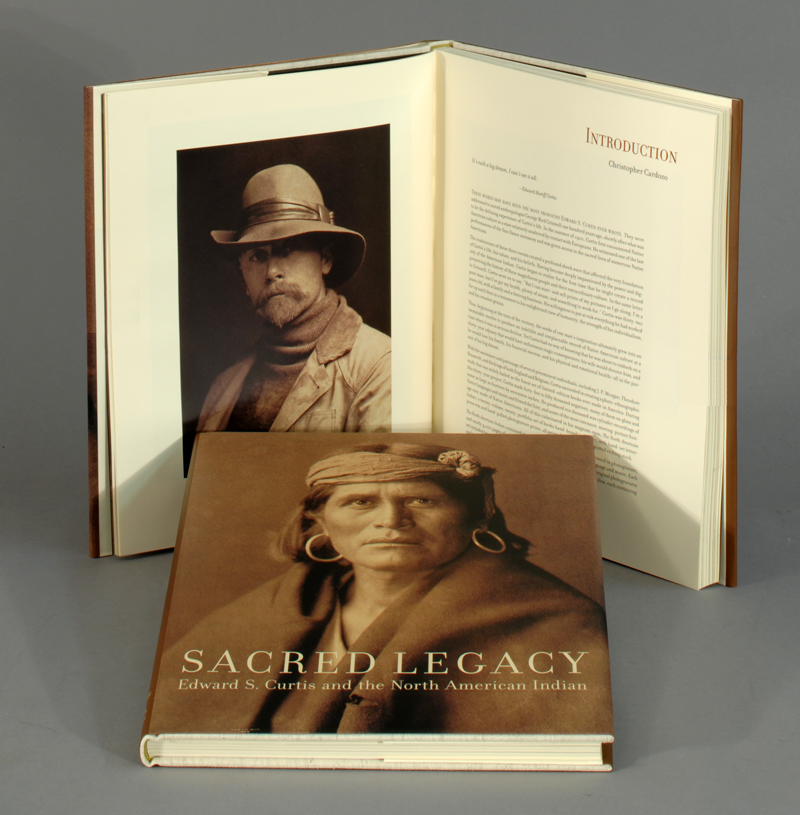
We have received a donation of twenty copies of the wonderful book Sacred Legacy by Christopher Cardozo. These are sealed, first edition, first printing copies of this out-of-print book which we are selling through our webpage and ebay for $75.
In this landmark volume, almost 200 of the finest examples of Curtis's photographs are reproduced with startling fidelity to his original prints. Produced to the very highest standards, Sacred Legacy presents Curtis's work without compromise for the first time in the modern era. Taken together, these profound images constitute no less than the core and essence of his life's work. Until now, virtually none of Curtis's photographs have been reproduced in a manner that captures the clarity and richness of his original master prints. In Sacred Legacy, his greatest images are reproduced from the finest source materials available — a significant number from breathtaking platinum, gold, and silver prints. All have been carefully selected for publication and for an accompanying international exhibition by Curtis authority Christopher Cardozo.
2015 Crafting the Future Gala
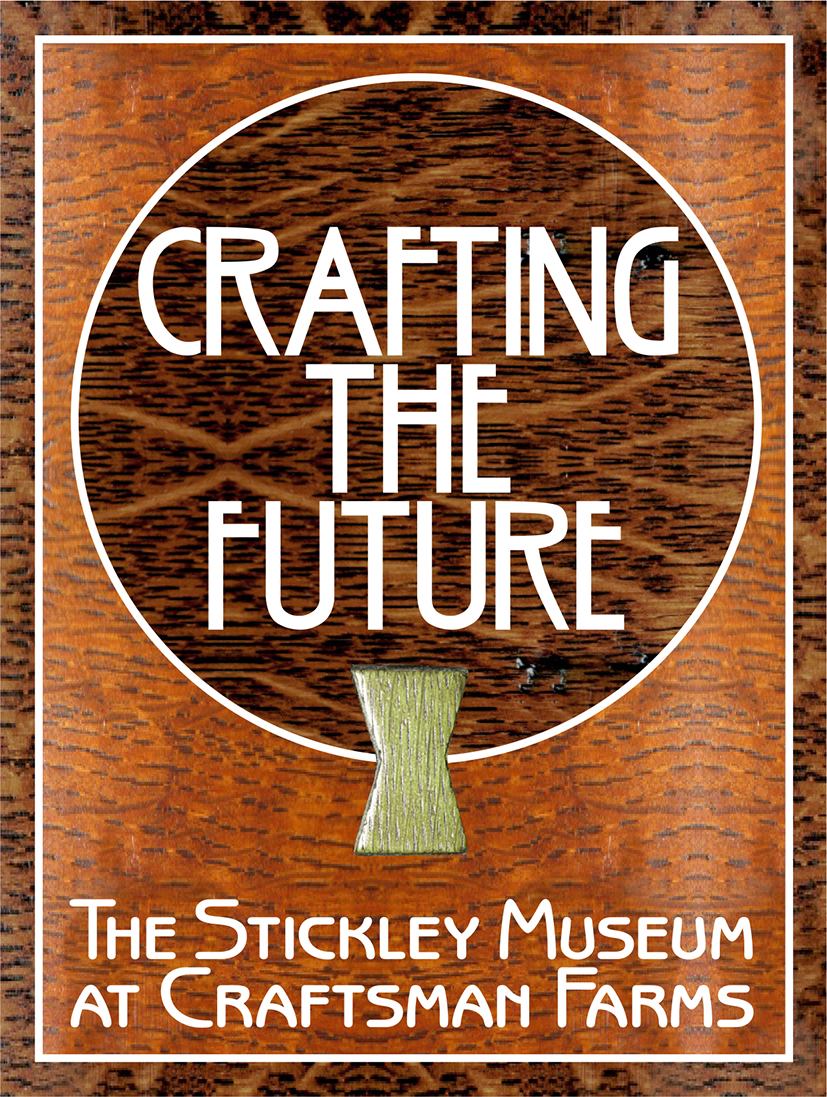
The Two Red Roses Foundation is pleased to support The Stickley Museum Craftsman Farms in its annual fundraising event by advertising in their Gala Program Brochure. This year’s Gala production entitled Crafting the Future is being held on Saturday, October 17, 2015. Pictured below is the full page color ad featured in the Program spotlighting Gustav Stickley and MAACM.
